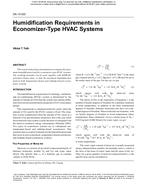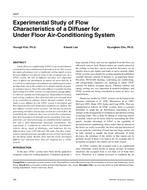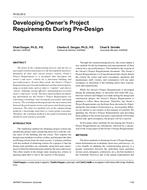Conventional venting systems for oil-fired residential heating equipment include the flue connector, a barometric damper, and the chimney. This arrangement is directly responsible for some of the system energy losses, including a part of the off-cycle heat loss and infiltration losses. The magnitude of these losses depends upon the location of the unit, the chimney construction, and the characteristics of the barometric damper and the burner. In the work described in this paper, a study of the characteristics of burners and dampers was done to permit these energy losses to be estimated as a function of the installation details. The purpose is to determine the energy savings that might be realised from alternative venting methods. Flows through the heating unit and barometric damper flows have been calculated during the on-and off-cycle for a range of configurations as a function of outdoor temperature. Based on these flows, an example of the annual energy losses due to the venting system was calculated using a bin method for a boiler. Generally, the benefits of reducing barometric damper flows are to a great degree offset by increased off-cycle losses in the case of boilers.
KEYWORDS: flue gases, heat loss, chimneys, boilers, domestic, oil fired boilers, burners, dampers, oil burners, vents, fluid flow..
Citation: Symposium, ASHRAE Transactions, vol. 96, pt. 2, St. Louis 1990
Product Details
- Published:
- 1990
- Number of Pages:
- 7
- File Size:
- 1 file , 820 KB
- Product Code(s):
- D-18734


